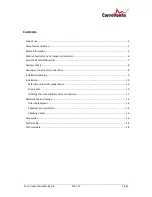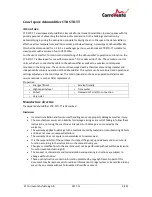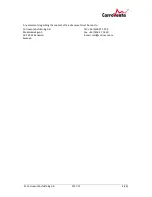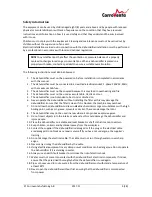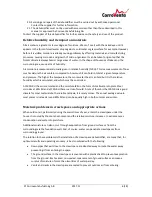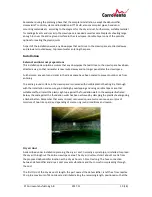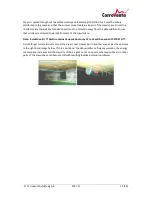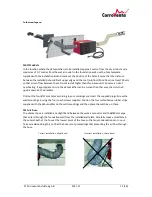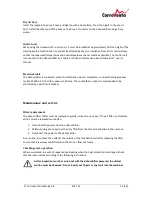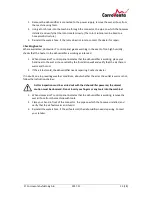
© Corroventa Avfuktning AB
2017.11
6 (18)
20.
Servicing and repair of the dehumidifier must be carried out by authorised personnel.
Contact the supplier for further information.
21.
The dehumidifier must not be used with accessories other than those described in this
manual or approved by Corroventa Avfuktning AB.
Contact the supplier of this dehumidifier for further advice on the safety and use of the product.
Relative humidity and its impact on materials
All air contains a greater or lesser degree of moisture. We can’t see it with the naked eye until it
appears in the form of small water drops against a cold metal or glass surface for example. However,
before it is visible, moisture is already causing problems by affecting materials and manufacturing
processes, causing corrosion and growth of micro-organisms. It can be taken for granted that the
Nordic climate is always humid. Large areas of water, in the shape of thousands of lakes and the
surrounding sea, cause a lot of humidity.
Air moisture is measured and usually given in relative humidity (% RH). This is a measurement of how
much moisture the air contains compared to how much it can hold in total at a given temperature
and pressure. The higher the temperature, the more water the air can hold but it is the relative
humidity which is calculated, and which must be controlled.
At 100% RH the air is saturated and the moisture falls in the form of small water droplets. Steel
corrodes at 60% RH and at 70% RH there is a risk of mould. A rule of thumb is that 50% RH is a good
climate for most materials but here in Scandinavia, it is rarely so low. The annual average value in
most places is instead around 80% RH and can be equally high in both summer and winter.
Moisture problems in crawl spaces and appropriate actions
When outdoor air, particularly during the warm times of year, enters the crawl space under the
house it is cooled by the cool environment and the relative moisture increases. In extreme cases
condensation and water droplets form.
Additional moisture can also occur through evaporation from ground surface or from the
surroundings via the foundation wall. And, of course, water can penetrate crawl spaces from
surrounding ground.
The solution to these problems is the installation of a crawl space dehumidifier, a remedy that, for
optimum results and operating economy, is best combined with the following:
•
Downpipes that exit close to the crawl space are directed away to route the water away
preventing it from entering the space.
•
The ground surface in the crawl space is covered with a plastic sheet to prevent evaporation
from the ground. Each missed, non-sealed, square meter of ground surface can mean a
surplus of moisture of more than two litres of water per day.
•
Vents and cracks in the crawl space are sealed to prevent outdoor air from entering.


